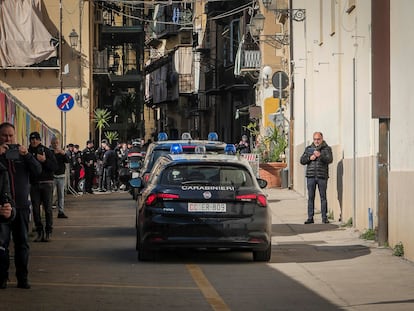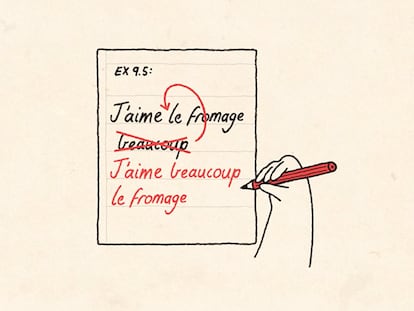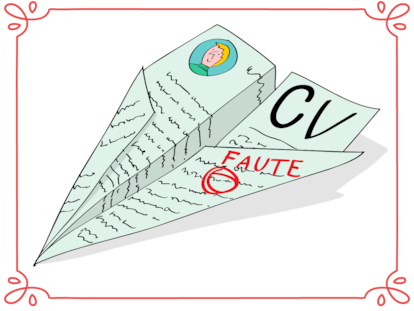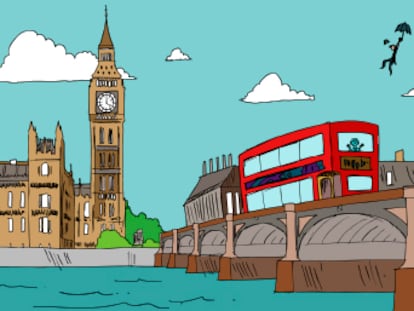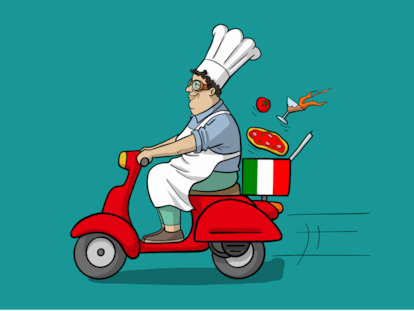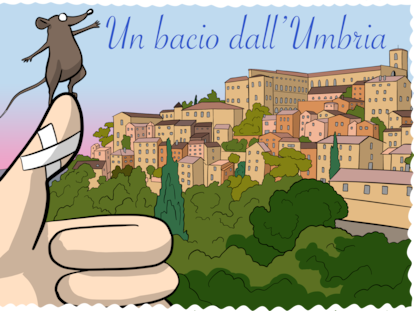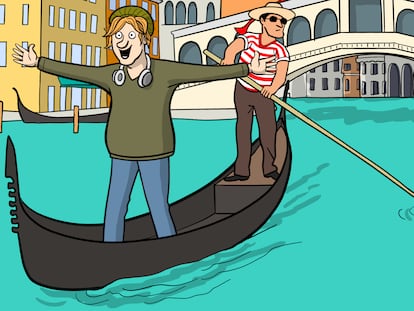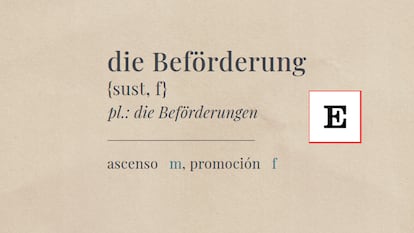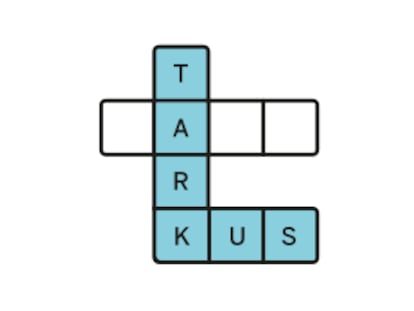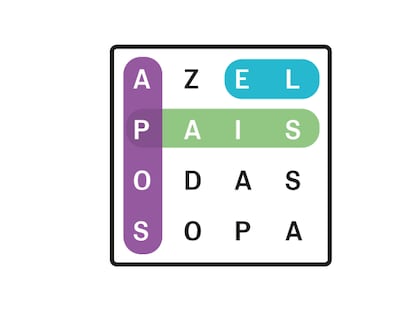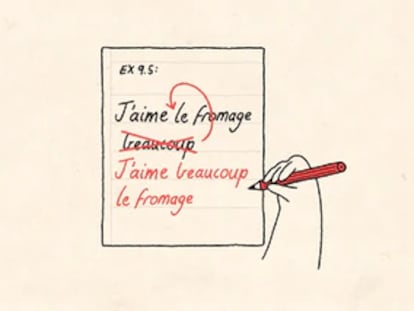The Italian mafia’s tentacles in Colombia: Cheaper cocaine and ties with the Gulf Clan
The recent capture of several leaders of the Camorra and the ‘Ndragheta highlights the extensive operations of European crime groups in the South American country
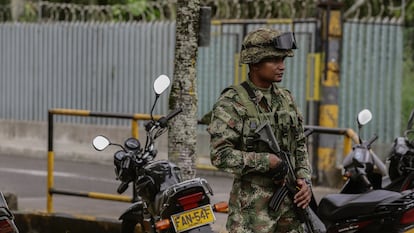
The presence of the Italian mafia in Colombia is no longer going unnoticed. The arrests of several leaders of groups such as the Camorra and the ‘Ndragheta in recent months have demonstrated the widespread activity and great interest of these criminal structures in the South American country, the world’s largest cocaine producer. Given growing international demand for the drug, the mobsters are seeking a more direct business, without intermediaries, to reduce their operating costs. They do this with the collaboration of local groups such as the Gulf Clan, which facilitates the transit of the drug to Europe and the rest of the world.
The most recent arrest was that of Emanuele Gregorini, alias “Dollarino,” a mobster wanted in more than 190 countries for having an Interpol red notice against him. He was arrested in Cartagena and served as the regional leader of the so-called Lombardo Mafia System, comprised of Italy’s largest criminal organizations: Camorra, Cosa Nostra, and ‘Ndrangheta. His job was to manage the transportation of drugs from Colombia, Panama, and Brazil to Europe.
A few months earlier, in October, two camorristas were arrested in Medellín: Gustavo Nocella and Luigi Belvedere. The former, alias “Ermes,” was another key figure in drug trafficking. He coordinated “the logistics for preparing and storing cocaine hydrochloride to be transported from Colombia to Amsterdam, using boats and sailboats,” authorities explained. President Gustavo Petro clarified that his capture was the result of a six-month effort between the Colombian police, the Italian Carabinieri, and Europol. “The fight against drug trafficking is against the bosses,” he said at the time.
Belvedere, for his part, was considered one of the most dangerous criminals by Italian authorities. He was discovered in the capital of Antioquia after a photo of him was found at the tomb of drug trafficker Pablo Escobar on the outskirts of the city. His role was as a liaison with the Gulf Clan, a group to which he even offered some $750,000 for an escape plan that never materialized.
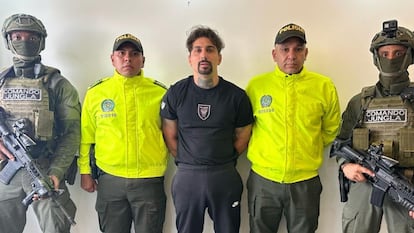
A bastion of drug trafficking
The Italian mafia has found a stronghold in Colombia for its drug trafficking operations, experts say. Sara García, an investigator for the specialized media outlet Insight Crime, asserts that the "logistical framework" attracts international networks to use the country as a platform for operating in Latin America. "Mafias have access to illegal actors who act as drivers of the drug trafficking economy, and to logistics operators and transporters, among others," she asserts in a telephone call.
The expert points out that there has been a significant change in recent years: the mafia has decided to negotiate cocaine deals directly, not only to save costs but also to obtain a better-quality drug. It wasn’t always this way: in the 1970s and 1980s, they negotiated with the Colombian Medellín and Cali Cartels, but since the end of the century, with the collapse of these large structures, Italian groups have found a space to become directly involved. “The dynamic is to have emissaries: people who come to Colombia to make the purchase directly. They also coordinate the logistics and verify the quantity of the drug,” García explains.
Even so, a good relationship between mobsters and local criminals is key. In the 1990s, they established a relationship with the United Self-Defense Forces of Colombia (AUC), led by Salvatore Mancuso, the son of an Italian immigrant. The ‘Ndrangheta bought large quantities of drugs produced by the AUC and also helped launder the money through investments in businesses such as restaurants. According to a 2008 investigation by the Italian parliament, the ‘Ndrangheta had a very good relationship with Colombian cartels, as “they were absolutely reliable and could offer greater guarantees than other mafias.”
After the demobilization of the AUC two decades ago, the Gulf Clan has assumed that role as a Colombian liaison. Although the Europeans seek fewer intermediaries, they are not interested in waging war with the national groups. Juan Carlos Ruiz, a professor at the Universidad del Rosario and a security expert, believes they are necessary links: “At one point, there was talk that the Mexican cartels wanted to take over the Colombian business and that’s why they were coming to the country. It’s highly unlikely. It’s also unlikely that the mafia is trying to displace Colombians. What they’re doing is securing the product and exporting it more safely.”
Despite Colombian government efforts against cocaine over the past decade, data show that cocaine production continues to multiply. The UN reported that the country reached 253,000 hectares of coca leaf planted in its territory in 2023, five times more than in 2013. Its cocaine production potential, according to the United Nations Office on Drugs and Crime (UNODC), grew 53% between 2022 and 2023 alone. The situation is so critical that Colombia is on alert for the possible loss of its certification by the United States as an ally in the fight against drug trafficking. Exclusion would mean a reduction in economic and military aid and could affect U.S. investment.
In this context, mafias have found fertile ground to satisfy a growing demand: the UNODC noted in its most recent report that, despite the expansion of synthetic drugs, cocaine continues to boom in Europe and has gained presence in Asia, Oceania, and Africa. "As long as this demand persists, European networks will continue to seek alliances with Colombian groups," García added.

Its privileged position in the drug market has turned Colombia into a hub for foreign criminal networks. Ruiz maintains that authorities have recorded the presence of mafias from Italy, Mexico, Russia, Turkey, and Albania, although they are increasingly difficult to detect, as they branch out their operations to neighboring countries like Ecuador, Peru, and Brazil. Nevertheless, the recent arrests of the Italians have been hailed by Colombian authorities as a success and a blow to transnational crime.
Sign up for our weekly newsletter to get more English-language news coverage from EL PAÍS USA Edition
Tu suscripción se está usando en otro dispositivo
¿Quieres añadir otro usuario a tu suscripción?
Si continúas leyendo en este dispositivo, no se podrá leer en el otro.
FlechaTu suscripción se está usando en otro dispositivo y solo puedes acceder a EL PAÍS desde un dispositivo a la vez.
Si quieres compartir tu cuenta, cambia tu suscripción a la modalidad Premium, así podrás añadir otro usuario. Cada uno accederá con su propia cuenta de email, lo que os permitirá personalizar vuestra experiencia en EL PAÍS.
¿Tienes una suscripción de empresa? Accede aquí para contratar más cuentas.
En el caso de no saber quién está usando tu cuenta, te recomendamos cambiar tu contraseña aquí.
Si decides continuar compartiendo tu cuenta, este mensaje se mostrará en tu dispositivo y en el de la otra persona que está usando tu cuenta de forma indefinida, afectando a tu experiencia de lectura. Puedes consultar aquí los términos y condiciones de la suscripción digital.
More information
Archived In
Últimas noticias
Daytime, headphones, no booze involved: How a generation is saying ‘no’ to club parties
Millennia-old Yuracaré language resists extinction through 900 speakers and a new dictionary
Susan Boyle prepares a comeback just as Timothée Chalamet sings her praises
Trump suspends green card visa lottery after shooting at Brown University
Most viewed
- Christian Louboutin: ‘Young people don’t want to be like their parents. And if their parents wear sneakers, they’re going to look for something else’
- Cartels in Mexico take a leap forward with narco-drones: ‘It is criminal groups that are leading the innovation race’
- Liset Menéndez de la Prida, neuroscientist: ‘It’s not normal to constantly seek pleasure; it’s important to be bored, to be calm’
- ‘El Limones’ and the growing union disguise of Mexican organized crime
- US sanctions against jailed cartel leader ‘El Marro’ highlight Mexico’s lack of control over its prisons

